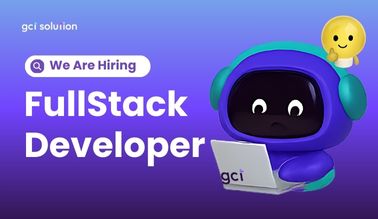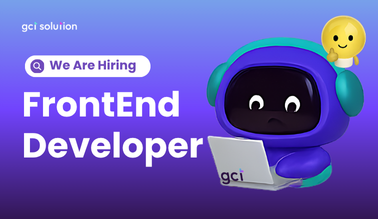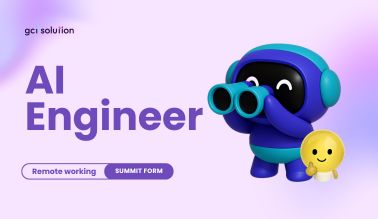Offshore Agile Software Development: Best Practices, Challenges, and Tools for 2025
Offshore agile software development combines the best of two strategic worlds: cost-effective, skilled labor from global teams with the responsiveness and adaptability of agile methodology. In an era where speed and flexibility are essential, offshore agile development allows companies to remain competitive while maximizing resources. With offshore agile adoption growing across industries, companies are benefiting from increased productivity, enhanced product quality, and rapid time-to-market capabilities.
However, not every offshore agile endeavor is a success. Challenges such as communication gaps, cultural differences, and maintaining quality control can pose significant obstacles. This guide delves into the essentials of offshore agile software development, from benefits and best practices to overcoming hurdles and selecting the right tools for 2025. If you’re looking to harness offshore agile effectively, this comprehensive guide has you covered.
1. Why Offshore Agile Development? Understanding the Core Benefits
Implementing agile methodologies in an offshore development setting brings a variety of benefits, primarily driven by agility, cost-efficiency, and quality. Let’s explore these core advantages in detail.
Flexibility and Adaptability in Rapidly Changing Markets
In today’s tech-driven market, the ability to pivot quickly is critical. Agile methodologies allow teams to respond to feedback and make necessary adjustments in real time, keeping development aligned with market demands. Offshore agile development teams, when equipped with the right communication tools, can rapidly iterate based on evolving needs, minimizing delays and delivering updates faster than traditional models.
Cost Savings and Global Talent Access
One of the most appealing aspects of offshore development is the potential for significant cost savings. By collaborating with developers in regions with lower costs of living, companies can reduce labor expenses without sacrificing quality. Moreover, this model allows access to a global talent pool. Companies can tap into specialized skills or technologies that might be scarce locally, such as AI expertise in Eastern Europe or mobile development talent in Southeast Asia.
Enhanced Product Quality through Continuous Feedback
A critical feature of agile is the integration of continuous feedback, which is especially valuable in an offshore context. With regular check-ins and sprints, development teams can make iterative changes, enabling higher quality and improved user experience. Agile practices foster collaboration between clients, project managers, and developers, ensuring a more refined product.
Improved Time-to-Market
Time-to-market is a priority in today’s fast-paced tech landscape. Agile’s iterative nature, combined with offshore capabilities, means companies can work around the clock across different time zones, accelerating the development process. This continuous work cycle enables faster delivery and quicker implementation of user feedback, helping businesses stay competitive.
2. Building Blocks of Offshore Agile: Methodologies, Tools, and Frameworks
An effective offshore agile setup requires the right combination of methodologies, tools, and frameworks tailored to fit distributed teams. Let’s examine each component in detail.

Agile Methodologies Best Suited for Offshore Collaboration
Different agile methodologies lend themselves to offshore collaboration in unique ways:
- Scrum: This popular agile framework emphasizes small, focused sprints and team collaboration, ideal for clear task distribution. Offshore teams benefit from the sprint structure, fostering accountability and regular communication, especially during sprint planning and retrospectives.
- Kanban: With its continuous workflow and flexibility, Kanban is suited for offshore teams that require constant visual project management. It’s beneficial when teams need a streamlined process to address changes as they arise.
- Lean: Lean development encourages efficiency by eliminating waste. Offshore teams benefit from this focus on value, especially when combined with local expertise to identify potential bottlenecks in workflows.
Each methodology has unique strengths. For a large offshore project, combining Scrum for structured tasks and Kanban for ongoing maintenance work can provide a balanced approach.
You may also like this blog:
The Ultimate Guide For You About Agile Methodology In Software Testing
Frameworks to Facilitate Distributed Agile Teams
Frameworks like the Scaled Agile Framework (SAFe) and Disciplined Agile Delivery (DAD) are invaluable for larger teams or projects. These frameworks provide structure for scaling agile across multiple teams while keeping everyone aligned on the same objectives. SAFe, for instance, is highly beneficial for projects with both onshore and offshore elements, as it incorporates roles and responsibilities that facilitate cross-team communication and transparency.
For companies with multiple offshore locations, frameworks like LeSS (Large Scale Scrum) also offer a unified approach. LeSS keeps the Scrum principles intact, ensuring consistency across teams while allowing for individual adaptations in local offices.
Top Tools for Offshore Agile Success
Selecting the right tools is critical to ensuring offshore agile teams remain productive and connected. Here are some key tools:
- Project Management Tools: Jira, Trello, and Asana are among the top choices. These platforms allow offshore teams to track progress, assign tasks, and collaborate on projects seamlessly. Jira, with its agile boards and customizable workflows, is especially popular for managing sprints.
- Collaboration and Communication Tools: Offshore teams rely on real-time communication tools like Slack, Zoom, and Microsoft Teams to bridge the gap between different time zones. These platforms support instant messaging, video conferencing, and file sharing, crucial for daily stand-ups and feedback sessions.
- Continuous Integration and Deployment Tools: Tools like Jenkins, GitLab CI, and CircleCI enable automated testing and deployment, ensuring consistency in code quality regardless of location. CI/CD pipelines help detect issues early, reducing the need for extensive QA at the end of each sprint.
Together, these methodologies, frameworks, and tools form a solid foundation for offshore agile development, facilitating smoother workflows and better collaboration across global teams.
3. Key Challenges of Offshore Agile Development and Solutions
While offshore agile development offers numerous benefits, it also presents distinct challenges. Here’s a look at common obstacles and practical solutions for overcoming them.
Communication Barriers
One of the main hurdles is communication, often due to time zone differences and language barriers. This can result in delayed responses, misunderstandings, and inefficiencies.
- Solutions:
- Scheduled Overlap Hours: Establish a few overlap hours where both onshore and offshore teams are available. This can help address urgent issues in real time.
- Translation Tools: For teams with language differences, translation tools or bilingual team members can aid in bridging communication gaps.
- Asynchronous Communication: Encourage asynchronous updates through platforms like Slack or project management tools, ensuring everyone stays informed without requiring real-time responses.
Cultural Differences and Team Dynamics
Cultural differences can impact everything from working hours to conflict resolution approaches. Misunderstandings can arise from different perspectives on feedback, authority, and collaboration.
- Solutions:
- Cross-Cultural Training: Training on cultural awareness for all team members can help reduce misunderstandings and foster respect for diverse perspectives.
- Team-Building Exercises: Regular virtual team-building activities can create a sense of camaraderie and understanding among team members, breaking down cultural barriers.
Quality Assurance and Consistency
Maintaining quality standards across geographically dispersed teams can be challenging. Differences in local standards, testing practices, or development tools may result in inconsistencies.
- Solutions:
- Standardized QA Protocols: Develop a standardized QA process that all teams adhere to, ensuring consistency across locations.
- Automated Testing: Automate testing as much as possible to maintain uniform quality standards. Automated tests can provide real-time feedback on code quality, reducing the need for manual QA efforts.
Project Visibility and Accountability
Lack of visibility into project stages and responsibilities can lead to confusion, missed deadlines, and inefficient workflows.
- Solutions:
- Project Dashboards: Tools like Jira and Asana offer dashboards that provide real-time project status updates. This transparency allows all team members to track progress and address issues proactively.
- Regular Check-Ins: Daily stand-ups or weekly reviews help keep everyone aligned. Clear accountability structures ensure that each team member knows their role and responsibilities.
4. Effective Strategies for Implementing Agile with Offshore Teams
To successfully implement agile methodologies with offshore teams, structured strategies and consistent practices are essential. Here’s a look at actionable strategies that ensure cohesive and productive offshore agile teams.

Setting Clear Goals and Metrics for Agile Success
A primary driver of agile success is setting specific, measurable, achievable, relevant, and time-bound (SMART) goals. Offshore teams need clear objectives to stay focused and productive. Metrics such as sprint completion rates, code quality checks, and user story mapping can help measure progress and ensure team alignment.
To do this effectively:
- Define Key Performance Indicators (KPIs): KPIs provide a shared understanding of goals and make it easier to track progress.
- Use OKRs (Objectives and Key Results): OKRs are highly effective for offshore teams to align on shared objectives while allowing flexibility on the “how.”
Structured Onboarding and Continuous Training
Bringing new team members up to speed is critical, especially with offshore teams. A structured onboarding program helps offshore members understand team expectations, tools, and workflows.
Best practices include:
- Standardized Onboarding Process: Develop an onboarding process that covers essential training on tools, communication protocols, and agile principles.
- Continuous Learning: Encourage team members to stay updated with agile certifications and participate in regular training sessions. Agile is a rapidly evolving field, and continuous learning helps maintain high standards.
Defining Agile Roles Across Borders
Clear role definition is crucial to ensure that offshore team members understand their responsibilities and feel empowered to contribute fully. Key roles like Product Owner, Scrum Master, and development team members should be well-defined, with each member understanding their duties within the agile framework.
Tips for success:
- Role Assignments: Ensure that each role, whether onshore or offshore, aligns with the agile framework.
- Frequent Role Reviews: Conduct periodic reviews of each team member’s role to assess any need for realignment.
Implementing Sprints and Iterations Effectively
Implementing agile sprints across time zones requires careful planning. Sprint planning, retrospectives, and reviews should be structured to accommodate offshore schedules, ensuring smooth collaboration.
To optimize sprint implementation:
- Centralized Sprint Planning: Use collaborative tools for sprint planning, with recordings and notes for team members in differing time zones.
- Regular Retrospectives: Post-sprint retrospectives are crucial for continuous improvement. Offshore retrospectives can be held asynchronously with written feedback or recorded sessions.
Ensuring Feedback Loops in Real Time
Effective feedback loops allow teams to address issues promptly and iterate continuously. Offshore teams benefit from consistent feedback through structured meetings and open communication channels.
Best practices include:
- Scheduled Check-ins: Daily stand-ups and weekly meetings keep the team connected and issues addressed in real time.
- Automated Feedback Collection: Use tools that provide feedback on code quality and project status, ensuring that offshore members receive updates even outside of core hours.
5. Communication in Agile Offshore Teams: Bridging the Gap
Effective communication is the cornerstone of successful agile offshore development. By establishing reliable communication protocols and leveraging the right tools, teams can maintain transparency, alignment, and efficiency across global locations.
Establishing Reliable Communication Protocols
Defining clear communication protocols reduces misunderstandings and ensures that everyone stays informed. Whether synchronous or asynchronous, consistent communication helps keep teams aligned despite time zone differences.
Steps to implement strong communication protocols:
- Synchronous and Asynchronous Channels: Use platforms like Slack for asynchronous messaging and Zoom for synchronous video calls.
- Clear Communication Expectations: Set guidelines for response times, meeting frequency, and types of updates to ensure clarity.
Choosing the Right Collaboration Tools
Selecting tools that fit the team’s workflow is essential for effective collaboration. Offshore teams benefit from a mix of messaging, video conferencing, and project tracking tools.
Recommended tools include:
- Slack: Ideal for asynchronous communication and real-time updates.
- Zoom or Microsoft Teams: Useful for virtual meetings, team calls, and screen sharing.
- Confluence: Excellent for document sharing and organizing project materials in a centralized location.
Regular Stand-Ups and Daily Meetings
Daily stand-ups, even if brief, help keep offshore teams informed and aligned on project goals. These meetings provide an opportunity to address any blockers, celebrate progress, and refocus efforts as needed.
Tips for successful stand-ups:
- Time Zone Considerations: Schedule daily stand-ups during overlap hours so all team members can participate.
- Keep it Brief and Focused: Stand-ups should address “What did I do yesterday?” “What will I do today?” and “Are there any blockers?”
Promoting a Culture of Transparency and Feedback
A transparent culture fosters trust among team members, ensuring that everyone feels included and accountable. Offshore agile teams that embrace open feedback processes are often more successful in identifying and addressing challenges.
Ways to foster transparency and feedback:

.png)




